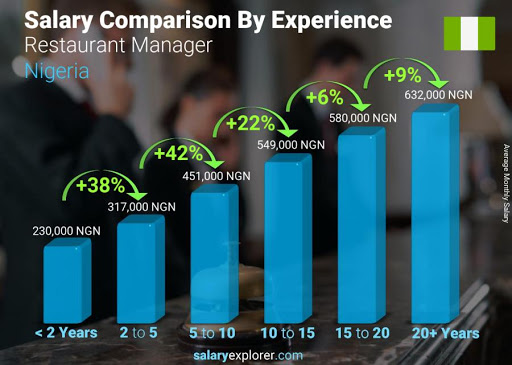In order to have full access of this Article, please email us on thedocumentco@hotmail.co.uk
Introduction of Major Fast Food Chains in Nigerian:
Major Fast Food Chains in Nigerian, The market entry strategy for an international business is primarily based upon a carefully thought out and executed market entry decision. These decisions also go a long way in influencing the firm’s other marketing mix decisions. As such, before delving into a given foreign market, companies normally face a variety of choices and decisions. As far as market entry is concerned, these choices and decisions encompass: nature and expanse of the chosen market or product; business objectives with special reference to the chosen market; entry methodology or strategy; entry timing; and availability of effective and efficient control systems.
The mode of entry, among others, stands out as being of the most crucial significance. It encompasses decisions about market size and potential for growth, competition, government regulations, local infrastructure and risk factors (Efrat&Shoham, 2015; and Czinkota&Ronkainen, 2012).
The entry methodology or strategy as adopted by a specific business is essential for the success of the venture as by virtue of the sensitivity and scope of such decisions, the complete range of the business’s activities may be affected.
These activities or factors mainly include: the products and services intended to be launched in the foreign market; the manufacturing or service related technology chosen to be employed in the foreign market; and the human resourceselected for the foreign venture.The importance of entry decisions is highlighted by two other interrelated facts, which include: the complexity and complication involved in changing an entry strategy once it is executed; and the resultant hesitation and reservation on part of businesses to opt for such a change.

Hence, the entry decisions or strategies assume an added criticality for the success of the businesses in the foreign markets, especially once these international markets are dynamic and too competitive to allow strategic mistakes (Hollensen, 1991; Khanna&Palepu, 2013).
In addition to the above mentioned factors, it is pertinent to mention that an ideal or model market entry strategy cannot be clearly laid out. These strategies are unique to each business and are normally designed in perfect accordance with the overall business strategies and objectives. Moreover, the market entry strategies can vary in terms of both the businesses and markets i.e. different businesses can opt for similar or different market entry strategies for same or different foreign markets.
Also, a business may choose to opt for different strategies in order to gain entry into different foreign markets (Doole& Lowe, 2012; and Gilligan &Hird, 2012).According to Petersen & Welch (2002), businesses also have the option of amalgamating various strategies or modes in order to develop or enter a particular foreign market.
The fast food industry is generally considered to be highly dynamic and volatile and attaches a lot of significance to brand names. The market is also highly competitive thereby displaying a variety of losers and winners in terms of huge losses and profits (Kotler, 2012; and Ayo, Bonabana-Wabbi & Sserunkuuma, 2012). Considering such high stakes and intense competition, the marketing research being carried out prior to foreign expansion is also usually very elaborate and exhaustive. The data for this dissertation is intended to be procured from the database of Euro Monitor and is expected to shed light on important market research questions that should be addressed when attempting to expand operations internationally (Mackay Et al., 2013; and Igumbor Et al., 2012). These questions primarily include and refer to the following aspects:
- What is the total size of the fast food market?
- What is the share or percentage of casual restaurants in the fast food market?
- What are the leading customer attraction strategies being adopted by the fast food chains with special reference to the unconventional time brackets or non-rush hours?
In 2008, the Nigerian International Franchise Association (NIFA) conducted a market survey in collaboration with the US Commercial Service in Nigeria (CS Nigeria). The findings of this survey visibly indicated a very strong and sustained growth in the fast food franchise sector or the quick food service restaurants (Euromonitor, 2015). Though, Nigeria has been enjoying the presence of various prominent foreign brandslikePepsi and Coca Cola since long; recently, first the KFC (Kentucky Fried Chicken) and then the Dominos, have been the first significant fast food brands from the US to establish outlet networks in Nigeria (Olotu&Awoseila, 2011).
Overall, the recent break-in and success of foreign fast food services like the KFC and the Dominos in the Nigerian market, is somewhat attributable to their marketing techniques, however, primarily their foreign market entry strategies are responsible for this phenomenal growth. Out of these two foreign fast food companies, KFC opened retail outlets in Nigeria in 2009 closely followed by the Dominos in 2012. This investment was in a bid to take advantage of the large population in Nigeria and also the booming popularity of the fast food industry especially amongst the younger generation(Olotu&Awoseila, 2011).
The marketing information and research data from the foreign franchises operating in Nigeria reveal that there is a growing demand for franchised services and products in the country. This is primarily because the market development strategies adopted by the foreign companies have proved to be efficient and effective, despite the presence of a few initial issues and challenges like tariffs, custom clearance, training and development of the locally hired employees and establishment of smooth supply chains (Olotu&Awoseila, 2011; and Shoyemi, 2014)…

Recent Comments